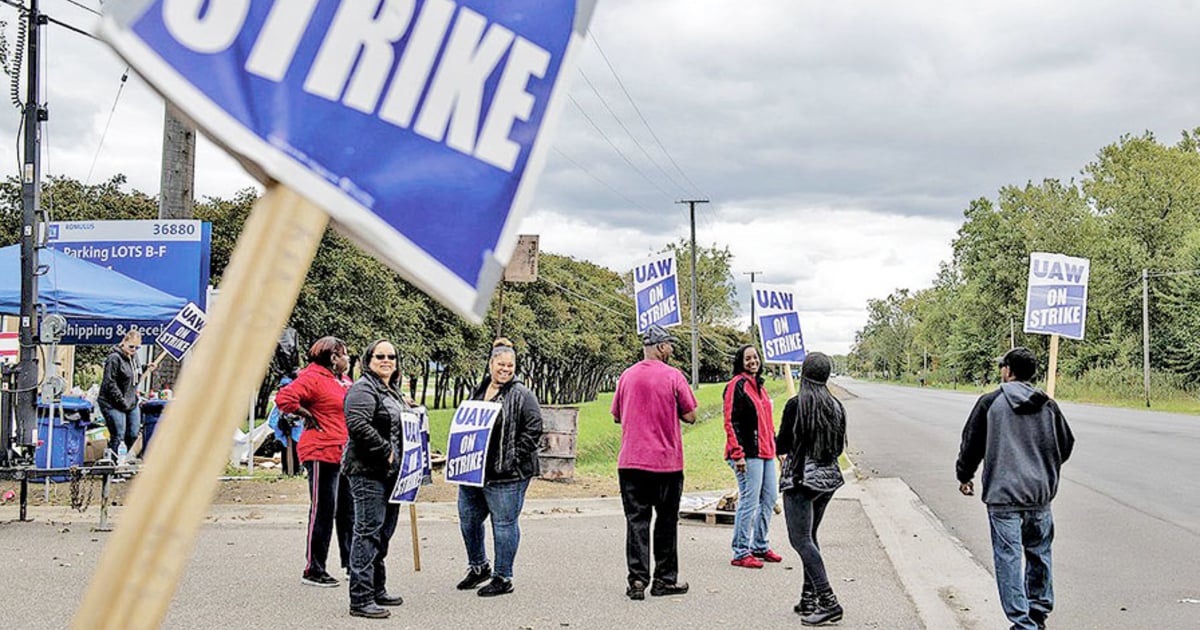
et’s state this upfront: No one at the Detroit 3 or the UAW truly knows right now how this year’s contract talks will play out.
But things could get really, really interesting if the UAW reimplements a temporary change in union rules from 2019 that — coupled with the severe worker shortage now roiling the U.S. economy — could shift the traditional power dynamic in negotiations.
Here’s what I mean: Back in October 2019, with about 48,000 workers one month into their 40-day strike against General Motors, the UAW temporarily altered its rules governing how outside employment impacted strike pay.
The changes seemed barely noteworthy in the midst of what turned out to be a roughly $4 billion strike against the largest of the Detroit 3. Among the changes: The union would no longer reduce weekly strike pay dollar-for-dollar when members’ outside income exceeded the UAW’s benefit — then $250 per week.
Before the change, as CNN explained at the time, “If a striker was making $260 a week in a second job, he or she would have had strike benefits of $240 rather than $250 a week.” The change meant that a striking worker earning $500 a week in outside employment — that’s just $12.50 an hour if they were working full time around strike duties — would have a combined income of $750 per week with their UAW benefits, not $500 per week, as was the case previously.
Earlier this year, the union’s membership doubled weekly strike pay to $500 per week. The temporary rule from 2019 regarding outside income, however, is no longer in place, according to the UAW. Now, if a striker’s outside income is $500 or more per week, they get no strike benefit. But if they make $499 or less in outside income, they get their full strike benefit, so long as they continue to also fulfill their strike duties. So combined, they receive a total of up to $999 in weekly income.
I can certainly understand why the union would rescind the 2019 change, if for no other reason than to keep from opening the sluice gates on its $825 million strike fund. But limiting outside income effectively hamstrings what could be powerful leverage in the upcoming negotiations.
While the official unemployment rate right now is about where it was prior to the 2019 strike, about 3.7 percent, the U.S. economy has 9.9 million job openings and only 5.8 million unemployed workers to fill them, according to the U.S. Chamber of Commerce, citing federal labor data.
Part of the reason is demographic — roughly 10,000 baby boomers per day reach age 65 — as well as lingering impacts of the COVID-19 pandemic. There are almost 2 million fewer workers today than there were in February 2020. As every employer knows, increased competition for a shrinking number of workers has pressured wages upward from factories to fast food joints.
At their core, strikes are a form of self-immolation intended to force employers to offer terms more agreeable to those who are doing themselves economic harm by withholding their labor. They can be extremely costly to both sides of the table and aren’t taken lightly.
Starting pay in a GM assembly plant today is roughly $17 an hour, while even fast food restaurants are regularly advertising jobs at up to $18 an hour to start, at least in the Detroit area. A strike potentially throws tens of thousands of workers into the job pool, where they could be quickly and efficiently absorbed. Most would likely return after a strike is settled, but some wouldn’t, given how physically taxing plant jobs can be.
To be sure, an extended strike against the Detroit 3 could inflict widespread pain across this industry, affecting dealerships, suppliers and potentially other automakers.
Years ago, I spent a great deal of time involved in labor, and I can absolutely attest to the fact that unions and union members know that strikes hurt everybody, including themselves.
But no matter what happens this fall, the economic conditions away from the negotiating table may have an outsized impact on the talks overall — and that’s worth thinking about.